Can't Find the Perfect Property In Your Price Range?
You're pre-approved for a mortgage, you've been shopping with location in mind, but unfortunately the perfect property isn't jumping out at you. There is no doubt about it, finding the perfect property (within your price range) is a difficult task, especially for first time home buyers. So, before you go and let buyer's fatigue set in, maybe you should consider adding the cost of renovations into your purchase.
Let me introduce you to the purchase plus improvements program! When purchasing a home, buyers can add the cost of home upgrades into their mortgage. The program is designed to allow for 10% of the purchase price to a maximum of $40K to be added to the mortgage for renovations and updates. A great option if you can't find something move in ready, and aren't afraid to do a little work!
Sounds simple enough, but in all honestly, it's quite the process, there are some pretty strict rules to follow. Firstly, you must provide quotes to the lender ahead of time for the work that you would like to have completed. It is good to note that the renovations will have to increase the value of the property accordingly. Secondly, the lender doesn't give you the money to do the renovations, you have to come up with that yourself. Once the work has been completed, (verified by an appraiser) the lender will reimburse you via your lawyer's trust account.
Obviously this program isn't for everyone, buying a home is a stressful endeavor to begin with, the added stress of having to undertake renovations right away might not be a good idea. But then again, if you have the financial wherewithal to handle the cost of renovations and like the idea of making it yours from the start, then this might be just the option you have been looking for!
If you would like to know more about the purchase plus improvements program, and how this program might work for you, please don't hesitate to contact me anytime!







